Jean-Michel Basquiat, a true rock star of the art world, shook things up with his unique style and edgy work. His journey from street hustler to art sensation continues to captivate and intrigue. Let’s dig into the fascinating story of Basquiat, uncovering the details that made him one of the most buzzed-about artists of all time.
Jean-Michel Basquiat Interesting Facts
Born in Brooklyn, New York, in 1960, Jean-Michel Basquiat’s life was as vibrant and complex as his artwork. From a childhood car accident that left an indelible mark to his meteoric rise in the New York art scene, let’s delve into some intriguing facts about this enigmatic figure.
- Brooklyn Boy with a Brush:
- Basquiat’s childhood was marked by both adversity and artistic exploration. A serious car accident at the age of eight left him with lasting physical and emotional scars, experiences that would later permeate his artwork.
- Despite dropping out of high school at 17, Basquiat’s passion for art couldn’t be contained. He embarked on his artistic journey by creating graffiti under the pseudonym “SAMO,” using cryptic symbols and raw energy to challenge the established art world.
- From the Streets to the Spotlight:
- By the late 1970s, Basquiat’s talent could no longer be ignored. He emerged as a rising star in the burgeoning New York art scene, captivating audiences with his unique blend of street art, abstract expressionism, and poignant social commentary.
- His large-scale paintings, often featuring a fusion of vibrant colors, scribbled words, and thought-provoking imagery, addressed complex issues such as identity, race, poverty, and the dynamics of power.
- A Melting Pot of Influences:
- Basquiat’s artistic voice was shaped by a rich tapestry of influences. His Haitian and Puerto Rican heritage played a pivotal role in his exploration of identity and social justice, adding layers of cultural depth to his work.
- His artistic vocabulary drew inspiration from diverse sources, including African art, jazz music, and literature, creating a unique visual language that continues to intrigue and inspire.
- One of the most alluring aspects of Basquiat’s paintings is his use of words and symbols as a form of visual poetry. Like a secret language waiting to be decoded, these elements invite viewers to decipher his thoughts and observations on the world around him.
- The Warhol Connection and a Legacy Cut Short:
- The 1980s witnessed a groundbreaking collaboration between Basquiat and pop art icon, Andy Warhol. Their partnership yielded a series of paintings that pushed artistic boundaries and sparked widespread dialogue within the art community.
- Tragically, Jean-Michel Basquiat’s life was cut short at the age of 27 in 1988. Despite his untimely passing, he left behind an enduring legacy that continues to resonate with artists and art enthusiasts alike. His work serves as a poignant reminder of art’s power to challenge perspectives, evoke emotions, and ignite conversations about societal issues.
What was unique about Basquiat?
Basquiat was a true original, forging a distinctive artistic path that defied expectations. He masterfully blended seemingly disparate elements–street art, graffiti, and traditional art forms–to create a style that was uniquely his own. His canvases, often adorned with splattered paint, bold colors, and almost childlike figures, possessed a raw energy that was both captivating and thought-provoking.
Beyond aesthetics, Basquiat used his art as a platform to address pressing social issues. His paintings grappled with themes of racism, power struggles, and the lived experiences of marginalized communities, reflecting his own background and the social climate of his time.
His Haitian and Puerto Rican heritage, coupled with his upbringing in the vibrant melting pot of New York City, infused his art with a distinct cultural sensibility. He masterfully wove together personal narratives and societal observations, creating a visual tapestry that was both deeply personal and universally relatable.
Basquiat’s collaboration with Andy Warhol further amplified his unique vision. Together, they created works that pushed the boundaries of pop culture and fine art, merging Warhol’s iconic imagery with Basquiat’s raw energy. The result was a vibrant fusion of styles that challenged artistic norms and sparked critical acclaim.
Even in his most celebrated works, Basquiat never shied away from vulnerability. His art often revealed glimpses of his own personal struggles, adding an emotional depth that resonated with viewers on a visceral level.
His story, marked by both triumph and tragedy, continues to fascinate and inspire. His legacy as a talented, rebellious, and gone-too-soon artist is forever etched in the annals of art history. Basquiat’s art continues to challenge, provoke, and remind us of the power of art to give voice to the unspoken and challenge the status quo.
Did Jean-Michel Basquiat Get Married?
While Jean-Michel Basquiat’s artistic career was a whirlwind of success and critical acclaim, his personal life, particularly his romantic relationships, remains a subject of speculation and intrigue. Despite his fame and association with prominent figures, Basquiat never married.
His most high-profile relationship was with the Queen of Pop herself, Madonna. Their romance, though short-lived, unfolded during a time when both were on the cusp of superstardom in the early 1980s. However, like many of Basquiat’s relationships, it ultimately faded.
Several theories attempt to explain why Basquiat never married. Some speculate that his unwavering dedication to his art consumed a significant portion of his time and energy, leaving little room for a committed relationship. Others suggest that his struggles with addiction and mental health may have posed challenges to maintaining a stable partnership.
While these theories offer plausible explanations, the true reasons behind Basquiat’s personal choices remain shrouded in mystery. His art, however, provides a window into his soul, revealing a complex individual grappling with profound emotions and societal observations. His legacy lies in the raw honesty and unflinching vulnerability he poured into his work, leaving behind a body of art that continues to captivate and inspire generations.
When did Basquiat drop out of school?
Jean-Michel Basquiat, known for his rebellious spirit and unconventional approach to art, made the audacious decision to drop out of school at the age of 17. This act of defiance, while concerning to his father, proved to be a pivotal moment in his artistic journey.
By rejecting the traditional academic path, Basquiat freed himself from the constraints and expectations of formal art education. He embraced the freedom to explore his own artistic vision without the limitations of conventional techniques or critical scrutiny.
This newfound liberation allowed him to develop his unique style, blending street art with elements of fine art, creating a raw and expressive form that challenged artistic norms. His decision to forge his own path serves as a testament to the power of trusting one’s instincts and embracing unconventional approaches. Basquiat’s story continues to inspire aspiring artists to challenge conventions, embrace experimentation, and find their own artistic voices.
Was Basquiat rich when he died?
The question of Jean-Michel Basquiat’s wealth at the time of his death in 1988 is complex and multifaceted. While he had achieved a level of success that most artists only dream of, especially at such a young age, his financial situation was not as straightforward as one might assume.
During his lifetime, Basquiat’s paintings were already commanding impressive sums from collectors, and he moved among the elite of the art world, befriending and collaborating with renowned figures like Andy Warhol. It’s safe to say that he was far from struggling financially and likely enjoyed a lifestyle beyond the reach of many aspiring artists.
However, the astronomical prices now associated with Basquiat’s work–paintings fetching tens or even hundreds of millions of dollars at auction–were not the norm during his lifetime. The true explosion in his market value occurred posthumously, as the art world grappled with the loss of such a groundbreaking talent and began to fully appreciate the significance of his contributions.
While it’s impossible to say definitively how wealthy Basquiat was at the time of his death, his estate, managed by his family, has since become incredibly valuable thanks to the enduring popularity and skyrocketing prices of his artwork. His family has played a crucial role in carefully managing his legacy, ensuring that his art continues to reach new audiences while also benefiting from its remarkable appreciation in value.
Basquiat’s story reminds us that artistic recognition and financial success are not always aligned, and sometimes, true appreciation for an artist’s genius is fully realized only after they are gone.
Why did Basquiat use a crown?
Among the recurring motifs in Jean-Michel Basquiat’s iconic artwork, the crown stands out as a powerful symbol laden with meaning. This seemingly simple image takes on profound significance within the context of his work, representing themes of Black excellence, artistic ambition, and social commentary.
By crowning his figures, often Black men, Basquiat challenged the traditional art historical narrative that often relegated people of color to the margins. The crown became a symbol of empowerment, reclaiming a sense of regality and authority that had been historically denied. It was a bold statement that proclaimed the inherent dignity and worthiness of those who had been systematically marginalized.
Beyond its broader societal implications, the crown also held personal significance for Basquiat. It represented his own aspirations as a young Black artist navigating the often-exclusive world of fine art. The crown symbolized his ambition, his drive to achieve recognition and success in a field where Black artists were often underrepresented and undervalued.
Moreover, the crown served as a visual reminder of the power dynamics inherent within the art world and society at large. By placing crowns atop his figures’ heads, Basquiat was making a statement about who holds power, who is deemed worthy of recognition, and who gets to define what is considered valuable or important.
The crown, in essence, acted as a visual megaphone, amplifying Basquiat’s message and demanding that viewers confront uncomfortable truths about race, power, and representation. It became an integral part of his artistic vocabulary, a symbol that has transcended the confines of his canvases and continues to resonate with audiences today.
How did Basquiat make a difference?
Jean-Michel Basquiat’s impact on the art world and beyond cannot be overstated. He was more than just a painter; he was a cultural provocateur who challenged conventions, gave voice to the marginalized, and redefined what art could be.
One of his most significant contributions was bridging the gap between street art and the elite world of fine art. By bringing the raw energy and social commentary of graffiti into galleries and museums, he challenged the established art world’s notions of what constituted “real” art. He legitimized street art as a powerful form of expression and paved the way for future generations of artists to blur the lines between traditional genres.
Basquiat’s art fearlessly confronted issues of race, poverty, and inequality, shining a light on uncomfortable truths that society often preferred to ignore. He gave a voice to the voiceless, using his platform to amplify the stories and experiences of marginalized communities. His work sparked conversations about race relations, social justice, and the complexities of identity, forcing viewers to confront their own biases and assumptions.
Moreover, Basquiat’s approach to artmaking was revolutionary in its own right. He rejected the constraints of traditional techniques, embracing a raw, expressive style that was both childlike and sophisticated. He incorporated elements of collage, text, and found objects into his paintings, creating a visual language that was both chaotic and mesmerizing. He encouraged viewers to question their preconceived notions of art and to engage with his work on a deeper, more visceral level.
Basquiat’s legacy extends far beyond the art world. He has become a cultural icon, a symbol of rebellion, creativity, and social change. His influence can be seen in music, fashion, and popular culture, inspiring countless artists, musicians, and activists to use their voices to challenge the status quo and push for a more just and equitable world.
What is 1 interesting fact about Jean-Michel Basquiat?
While Jean-Michel Basquiat is best known for his groundbreaking paintings, his creative spirit extended far beyond the canvas. He was a true multi-hyphenate, dabbling in music, fashion design, and even writing. His restless energy and insatiable curiosity led him to explore various artistic avenues, demonstrating a remarkable versatility that transcended traditional artistic boundaries. This multifaceted approach to creativity highlights his constant desire to experiment, innovate, and express himself through diverse mediums.
Why is Basquiat a genius?
Jean-Michel Basquiat’s status as an artistic genius rests not only on the aesthetic brilliance of his work but also on his profound social commentary, his groundbreaking fusion of artistic styles, and his ability to capture the raw energy and anxieties of his generation.
Basquiat possessed an uncanny ability to blend the raw power of street art with the intellectual depth of fine art. He elevated graffiti to an art form, challenging the elitism of the art world while simultaneously creating works that grappled with complex themes of race, identity, and social injustice. He wasn’t content with merely creating beautiful objects; his art had something to say, and it demanded to be heard.
His style, characterized by bold colors, expressive figures, and a sense of raw, unbridled energy, reflected the zeitgeist of the 1980s. It was a time of social and political upheaval, and Basquiat’s art captured the anxieties, hopes, and contradictions of that era with remarkable clarity. He gave a voice to a generation grappling with issues of race, identity, and the complexities of modern life.
Moreover, Basquiat’s genius lay in his refusal to be confined by artistic labels or categories. He seamlessly transitioned between painting, music, fashion, and writing, viewing each discipline not as separate entities but as interconnected forms of expression. He was a true visionary who saw beyond the limitations of traditional artistic mediums, constantly pushing boundaries and challenging the status quo.
Basquiat’s enduring legacy is a testament to the power of art to provoke, inspire, and challenge our perceptions of the world. He remains a cultural icon, a symbol of artistic rebellion and unapologetic self-expression. His influence continues to resonate, reminding us that true genius lies in the ability to break down barriers, transcend boundaries, and give voice to the unspoken truths of our time.
So, what can we learn from Basquiat?
- Challenge everything: Don’t be afraid to question the status quo, to break traditions, and to create something entirely new.
- Find your voice: Use your art, in whatever form it takes, to speak your truth and amplify the voices of those who are not being heard.
- Embrace the mess: True creativity often arises from a place of chaos and experimentation. Don’t be afraid to get your hands dirty and see where your inspiration takes you.
- Never stop exploring: The world is full of possibilities. Don’t limit yourself to a single medium or way of thinking. Branch out, push your boundaries, and see what you can discover.
What symbol is Basquiat known for?
Jean-Michel Basquiat’s artwork is a rich tapestry of symbols, each one imbued with layers of meaning and open to interpretation. These symbols, often recurring motifs throughout his work, offer glimpses into his personal experiences, his cultural background, and his critiques of society.
One of his most recognizable symbols is the crown. More than just a decorative element, the crown represents Black excellence and heritage. By crowning his figures, often Black men, he challenged historical narratives that often excluded or marginalized people of color. The crown became a symbol of empowerment, reclaiming a sense of dignity, authority, and recognition.
Another recurring motif is the skull. While some might interpret skulls as morbid or macabre, in Basquiat’s work, they serve as reminders of mortality and the fragility of life. They suggest a certain rawness and honesty, an acknowledgment of the darker aspects of the human experience that are often brushed aside.
Basquiat’s use of African masks reflects his deep connection to his heritage and his exploration of identity. The masks represent the richness, complexity, and spirituality of African culture, adding another layer of meaning to his exploration of race and representation.
The graffiti tag “SAMO,” short for “SAMe Old shit,” harks back to Basquiat’s early days as a street artist. This cryptic message, which he and his friend Al Diaz spray-painted throughout New York City, represented their rebellion against the art world and societal norms. “SAMO” embodies the spirit of questioning authority, challenging conventions, and refusing to conform.
Beyond these specific symbols, Basquiat was known for his innovative integration of text and symbols within his paintings. He incorporated words, numbers, historical references, and seemingly random phrases, creating a visual language that was both chaotic and poetic. This blending of text and imagery challenged viewers to decipher his messages and engage with his work on a deeper level.
The Takeaway: Basquiat’s symbols were not merely decorative elements; they were integral components of his artistic language. Through these symbols, he conveyed complex ideas about race, class, identity, and the human condition. His work invites us to look beyond the surface and delve into the rich tapestry of meaning woven throughout his canvases.
For further exploration of art and music icons, discover Jimi Hendrix’s funkier side by diving into these intriguing facts about the legendary guitarist, or delve into the world of classical music and uncover lesser-known details about the phenomenal composer, Johannes Brahms.
- Unlock Elemental 2 Secrets: Actionable Insights Now - April 2, 2025
- Lot’s Wife’s Name: Unveiling the Mystery of Sodom’s Fall - April 2, 2025
- Photocell Sensors: A Complete Guide for Selection and Implementation - April 2, 2025
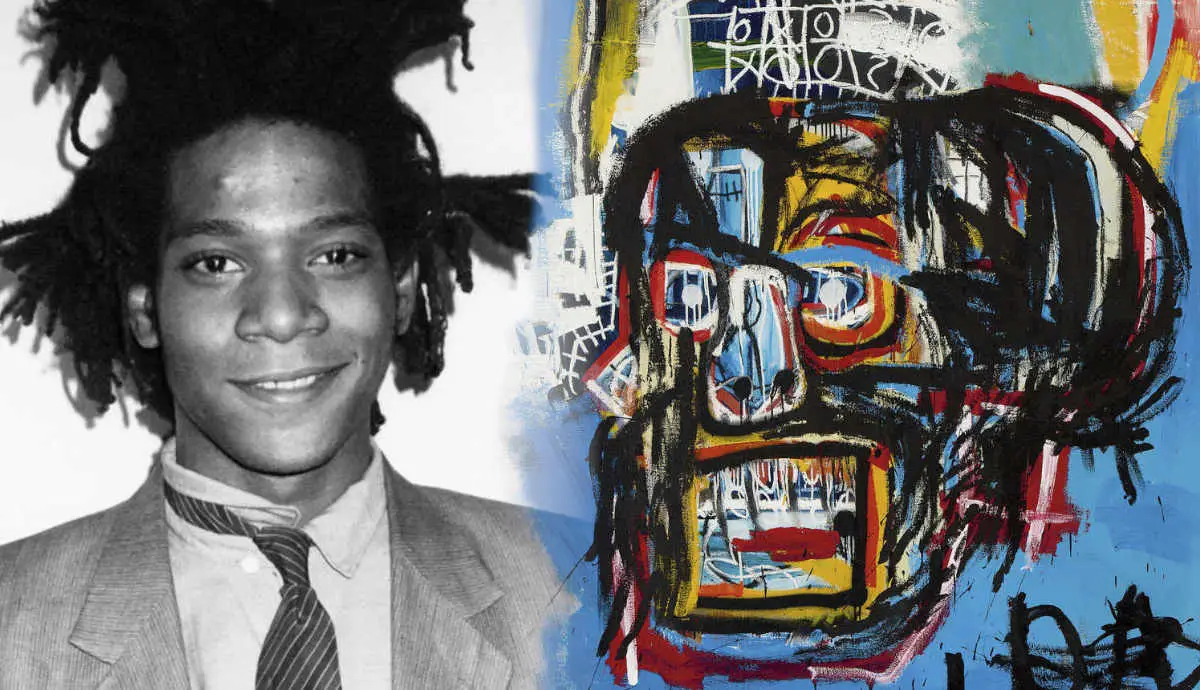
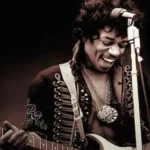

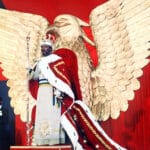
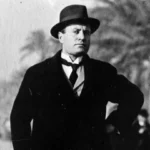

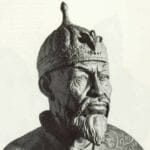










1 thought on “Beyond the Crown: Uncovering Interesting Facts about Jean-Michel Basquiat”
Comments are closed.